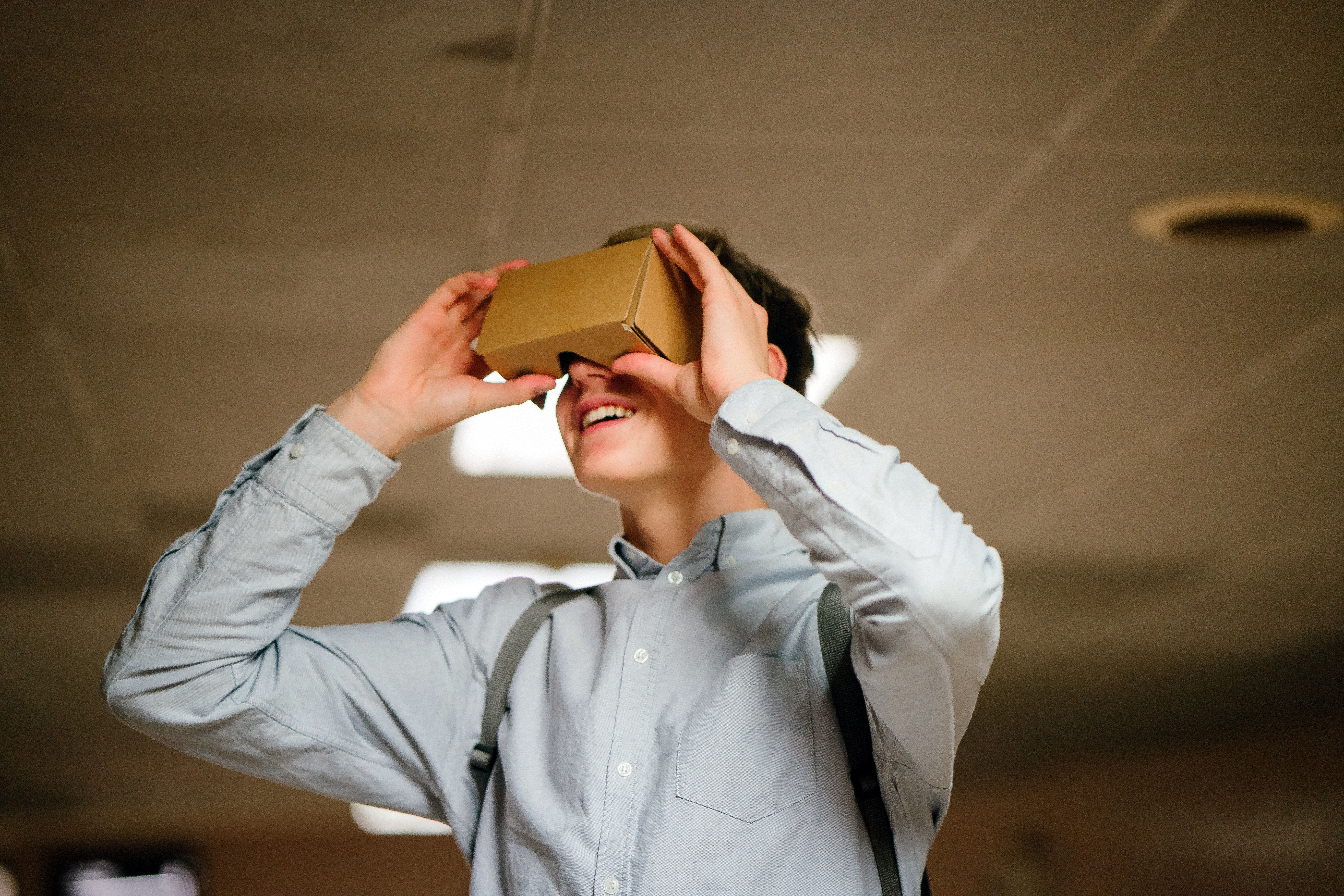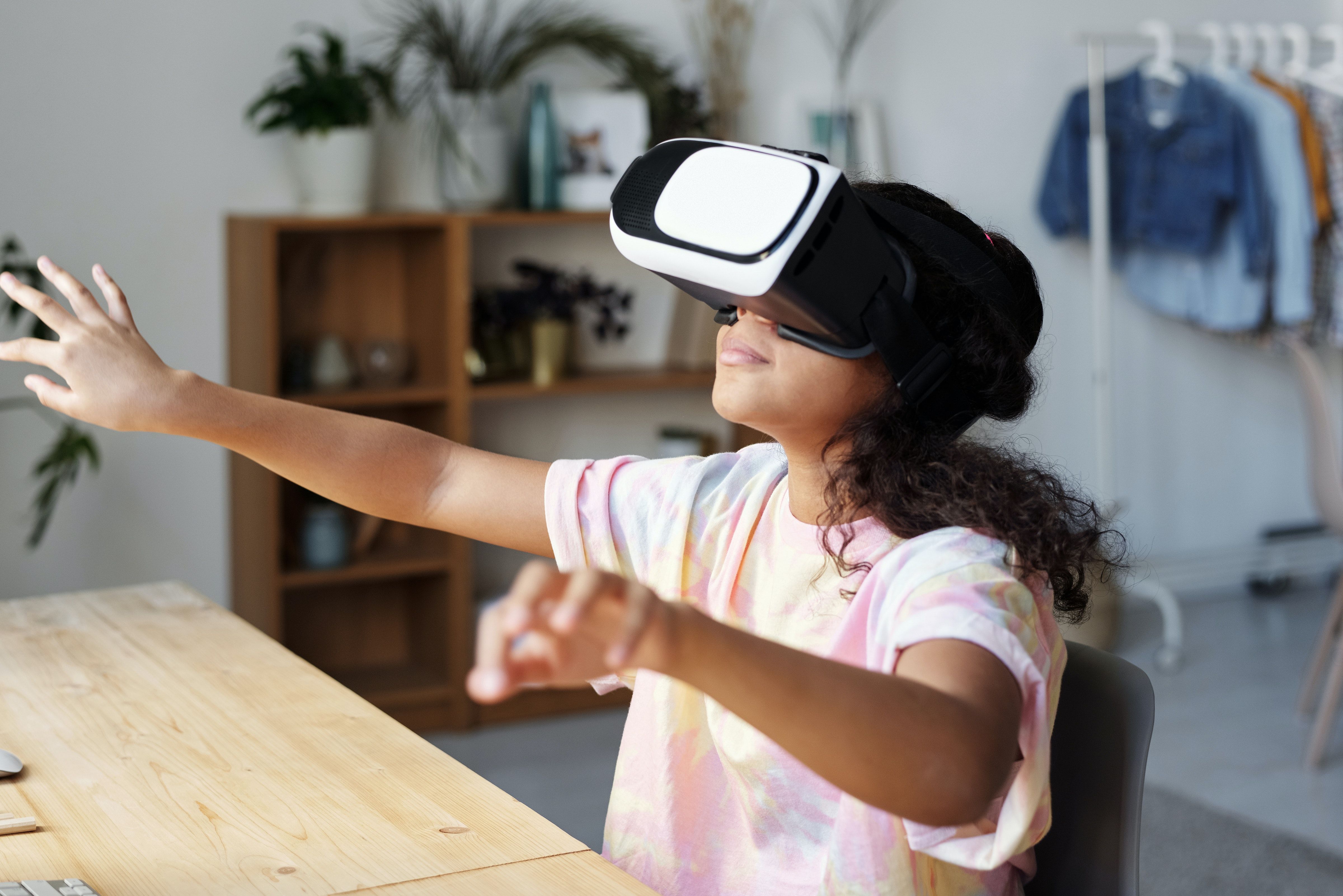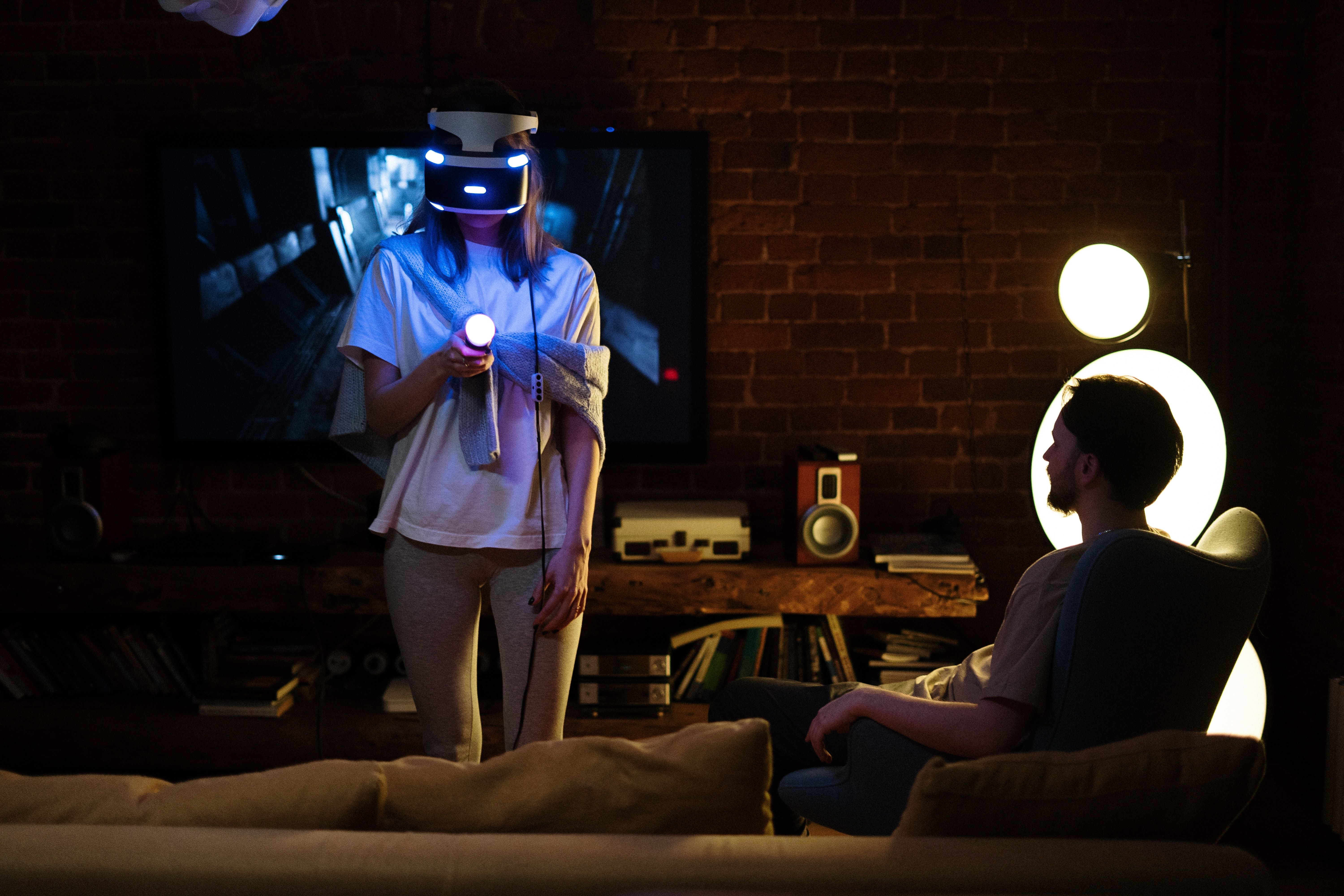As VR technology continues to develop, mobile and tethered headsets allow anyone to enjoy virtual reality. Both types of headsets can fully immerse you in the viewing and gaming experience, but they don’t provide the same level of quality.
Read on to discover exactly what makes mobile and tethered headsets different and why you might choose either to enjoy VR.
Mobile vs. Tethered VR Headsets: Features
Mobile headsets offer a more simplistic design and include minimal features. The most well-known, Google Cardboard, is made from one sheet of cardboard and includes two plastic magnifying lenses. Google even includes instructions on how to make your own at home.
Not all mobile VR devices are that easy to make, though. Some mid-range headsets have upgraded materials and include more tracking sensors, built-in controls, and focus wheels. They even have straps, so you don’t have to hold the headset up to your face constantly.
Tethered headsets are a bit more complicated and have lots of built-in features that make them unique from mobile headsets. For starters, they don’t require a mobile device to use. Instead, each one has a port that plugs directly into your computer or game console.
These top-of-the-line VR headsets include motion tracking, built-in high-resolution screens, and high-quality graphics. As a result, they tend to be more comfortable on your face and block out more of your external environment, fully immersing you in the experience.
Tethered headsets also cause less motion sickness due to the higher-quality graphics and screens. Although you can watch any VR video, they are used more frequently in the gaming community.
Mobile vs. Tethered VR Headsets: Cost
On the lower end of VR are mobile headsets like the Google Cardboard, which you can find for $9-$40. The cheap materials used and low tech doesn’t require a high price tag. These are the easiest to replace, but they are also the most vulnerable to breaking.
The next tier of options are mobile headsets that include straps for easy viewing and have more durable materials. These can start at $50 and go up to $200. These prices might seem high, but when you consider getting a dedicated app store for VR or a better control system, it makes more sense.
Tethered headsets cost a lot more due to their high-quality build and featured tech. Low-end tethered headsets start around $300, but if you want the crème de la crème, then you’ll be looking to pay up to four figures.
One of the hidden costs of getting a tethered headset is a high-powered processing computer. If you don’t have one, you could experience significant lag, ruining the entire experience. If you have a gaming console, you can work around this problem if your headset is compatible with your system. Headsets like the Playstation VR will also come with an attached box that helps process your video.
Mobile vs. Tethered VR Headsets: Viewing Experience
There is little comparison to the viewing experience between mobile and tethered headsets. Tethered VR sets take the cake ten times out of ten, while mobile VR headsets lack in every aspect of your viewing experience because of inadequate technology.
With mobile headsets, you are relying on your mobile phone to provide the viewing experience. You can enhance the VR experience with some mobile headsets because of the upgraded magnifying lenses, but it doesn’t enhance the quality of the video.
On the other hand, tethered VR headsets provide built-in LED and OLED screen displays and don’t need a phone. The screen is sharper, and the overall viewing experience is better.
Lower-end mobile VR headsets require you to hold up the device by hand. But with a tethered VR headset has comfortable straps and face cushions built-in to keep you comfortable for long periods of time.
A tethered VR headset has speakers built into the headset, so you don’t have to listen from your phone or use external headphones, along with covering your face more effectively and don’t let outside light ruin your viewing experience.
Mobile vs. Tethered VR Headsets: Hardware Requirements
Mobile VR headsets are pretty straightforward and only require a smartphone. Once you slide the phone into the mobile VR headset holder, you are ready to start viewing.
You will, however, need to be able to navigate to the proper VR videos or apps on your phone before viewing. Turning on a regular video and using the mobile headset will actually make the video unwatchable.
Tethered virtual reality headsets need quite a bit of processing power to play VR videos and games at a high level. Most VR tethered headsets require a 90Hz refresh rate, so your computer will need to run as close to 90 frames per second as possible. Anything less and you run the risk of motion sickness because the quality won't be smooth enough for a 360-degree experience.
For example, the HTC Vive (2016) and Vive Pro (2018) have a minimum requirement of an Intel Core i5-4590 or an AMD FX-8350 CPU to run effectively, although a more powerful processor delivers a better virtual reality experience. Likewise, although 4GB RAM is a minimum requirement for most tethered headsets, you should ideally have 16GB RAM. Furthermore, each tethered VR set has a different minimum requirement due to the different tech included in each device, so check the manufacturer's instructions for the best recommendations.
Mobile vs. Tethered VR Headsets: Uses
When you’re on the go and want to enjoy a video in VR, a mobile headset is going to be your top pick, especially if you only plan on watching one or two videos at a time. However, strapless headsets like the Google Cardboard can become tiresome if used for longer periods of time.
You can purchase a mobile VR headset with a strap if you don't want to watch VR videos by hand. Some of these include a button on the side of the headset that allows you to select a menu option or choose the next video.
Not all, but some mobile headsets include apps with simple games you can play. More complex games require the use of a controller, and most of the mobile options don’t have the tech for a controller.
Tethered headsets are perfect for any VR scenario because of the built-in sound and video. You’ll even get a controller to use so you can play more complicated games or interact with videos and apps more easily.
The biggest downside to tethered headsets is that you can’t use them while on the go. There is no way to go on a long car ride and use your tethered headset to stay entertained (obviously, while you're a passenger, not the driver!).
Tethered Headsets Are Better for VR
Tethered headsets bring a more enjoyable and comprehensive VR watching experience. They have better graphics, more durable materials used, and include audio and video in the device. Of course, they won’t be any good if you need to travel while using VR, but it will be hard to watch a video or play a game without a tethered VR headset once you’ve tried them.
Getting a VR headset for the first time for gaming? Familiarize yourself with everything you need to know so you can have the best VR experience possible.

.jpg)



